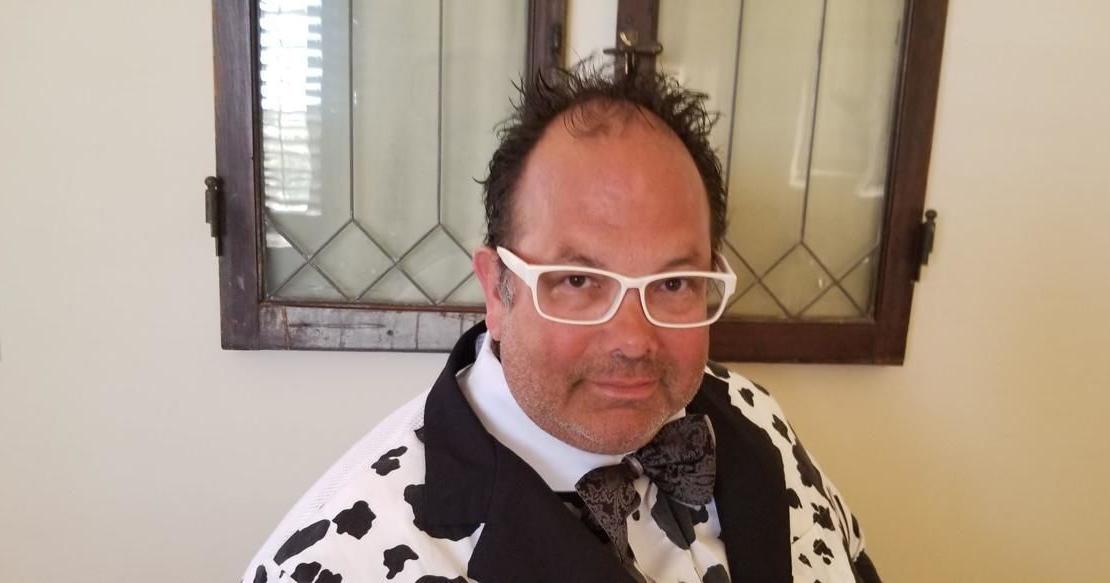Column: A finance career that circled around the globe and back | Opinion
As I am sure you are now aware from my column, I have been involved with the commodity markets for 35 years. Some as a broker, some as an investor and some as a media analyst. In the U.S., I have traded on the floors of the Chicago Mercantile Exchange and the Chicago Board of Trade.
The CBOT is the older brother, having been founded in 1848. The CME came along 50 years later. Most of the commodities you can think of with a big market are traded on these exchanges – they merged to form the CME Group in 2007. I have spent a large part of my career at the combined exchange trading everything from live cattle to soybeans. While it is so far a 35-year career, I need to write a book because it has been so interesting.
I have often said that I think commodity traders are some of the best traders and investors in the world for one reason – mother nature. Other lines of trading don’t have to take into account mother nature like corn, beans, coffee and sugar – to name a few. As a young 24-year-old trader, I was lucky enough to be promoted to start our first overseas office in the city of London in 1990. I landed at Heathrow armed with only a telephone number of the bed and breakfast I was staying at. No cell phone and no idea of the 16-year odyssey that awaited.
I was trained to trade most everything, and my firm had decided that I should trade the British interest rate. In the U.S., we call it Eurodollars. In Britain, it is called Short Sterling. The exchange was in a building built in 1844. It had originally been built in 1571 — yes, that’s right, 1571 — but had burnt down twice, and the last iteration was built in 1844. It was called the Royal Exchange and was opened by the queen of England at the time.
That was my first real brush with “history.” I thought the CME and CBOT were old, but heck, they didn’t even compare to 1571. We were now trading in the “new” building that was built in 1844, before the CME and CBOT even existed. Wow.
There are a lot of these little blue plaques dotted on buildings around the city of London. They are little explanations of what used to be there, what famous person used to be there or what stood there before it burned down a long time ago. It is terribly humbling when you walk by a plaque and it says, here stood so and so hospital, burned to the ground in 1250, rebuilt shortly thereafter only to be destroyed by a German bomb in World War II. I mean, if that doesn’t pique your interest, I don’t know what does. Every day I was walking in the steps of Shakespeare, Churchill and Charles Darwin. The history was so overwhelming, it was suffocating at times. I must admit, I loved it. Trading in that city was a privilege. I was conducting the most basic form of commerce in the heart of civilization.
Things progressed and I bought my first house. It was a little row house that you see in English movies. It was built for someone that worked the docks on the River Thames. It was small, but it was mine – and it was new to me. I believe the title, which was a neat wax-stained document, said that it was built in the 1890’s. So much for all the modern conveniences. I was able later to move out into something a bit bigger and a bit newer – one extra bedroom and 10 years newer – built in 1900. You kind of get used to things being not so convenient and the very fact that it forces you to slow down is a bit romantic. You can’t help but stop and smell the roses – the English love them and they are all over the place – hence the term “English Rose.”
A few years later, I was introduced to the Deutsche Bourse in Germany. That was the name of their exchange. And just as you imagined, the German exchange had already gone electronic, no open outcry, no trading pits. Just a clinical bank of computers efficiently doing the jobs they had been programmed to do.
In 1992, I was sent to take a look at starting up our firm in Singapore. They have the climate Florida and a good ole’ open outcry exchange. I was fortunate to interview a candidate by the name of Nick Leason. I didn’t hire him and dodged a bullet. He later brought down Barings Bank in London (the queen’s bank) and went on the lam, avoiding authorities until he was caught in Germany. Whew, that was a close call. The next exchange I was able to visit was the exchange in Sydney – SFE. It had just merged with the Australian Stock Exchange – changed its name to ASX and sent all the traders with their colored jackets packing. The computers were again in charge, just like in Germany. No fun, very clinical and the “way of the future.”
Again, I was lucky enough to join a Japanese bank in London, which then required me to travel to Japan a lot over the next few years. I got to see the Tokyo Stock Exchange, which was also an electronic exchange, no humans. The human interaction to conduct business and trading was slowly being phased out. If you were an open outcry trader, you were antique. If you were a programmer, you were the way of the future. It was deemed progress and you just could not get in the way of it.
To bring it back full circle, during my time sitting on the board of a technology company in London, I was able to negotiate the sale of the computer code and matching engine that powered the Tokyo Grain Exchange (TGE). While it was a bit weird to be dealing with an exchange that was really only based on computer code, I felt a little nostalgic as it was the grain exchange in Tokyo and grain exchanges were part of my roots. I was grasping for happy straws.
Anyway, it was a crazy tour of the world’s exchanges – I only wish that cell phones had the cameras they do now – what an album, or CD those photos would have made.
9 things to know about Pritzker budget plan
Pension contributions

Illinois’ largest general revenue fund expenses continue to be K-12 education and pensions. The latter will make up 20.7 percent of the proposed general revenue spending in the upcoming budget, or about $9.6 billion.
The governor has proposed adding another $500 million to the pension payment beyond what is required by law in fiscal years 2022 and 2023.
That’s notable, because previous governors have been widely criticized for shortchanging the pension system – something Pritzker proposed, then quickly abandoned, in his first year in office. Critics often point out that the state law governing pension payments already shortchanges the system from what accountants suggest should be paid into it.
The governor proposed spending $300 million of the surplus from the current fiscal year to pay down pensions, with $200 million added to the statutory payment in the upcoming budget.
The governor’s office estimated the $500 million increase beyond statutory amounts would reduce unfunded liabilities – which sit at about $130 billion – by about $1.8 billion. A pension buyout program previously approved by the General Assembly has reduced that liability by about $1.4 billion, according to the governor’s office.
Higher education

Gov. J.B. Pritzker speaks during his State of the State address at the Old State Capitol Building, Feb. 2 in Springfield.
K-12 Education

Approximately 21 percent of the budget is dedicated to Pre-K-12 education, an increase of $498 million from one year ago.
That includes $350 million for the evidence-based funding formula for K-12 schools, which prioritizes new money toward the schools furthest from their “adequacy” target, which takes into account class sizes, a local district’s property values and other factors.
The budget asks for another $54.4 million to provide early childhood education services to another 7,100 children, and another $96 million in transportation and special education grants for schools.
Another $12 million would be added to the Regional Offices of Education budget to address truancy and chronic absenteeism, and agriculture education funding would increase by $2 million.
Temporary tax relief

The governor cited rising inflation as the basis for creating about $1 billion in temporary tax relief for motor fuel, groceries and property taxes.
The motor fuel tax relief would not lower gas prices, but it would prevent an annual increase to the motor fuel tax that is written into law from taking effect this year. It prevents a hike of 2.2 cents per gallon of gas, according to the governor’s office – a taxpayer savings it pegged at $135 million.
Motor fuel tax money does not go to the general revenue fund, but rather to road construction projects. The tax holiday does not appear to affect a proposed $46.5 billion capital infrastructure budget, which is mostly an extension of the 2019 Rebuild Illinois plan.
The governor also proposed rolling back a 1 percent state grocery tax for the fiscal year, a taxpayer savings pegged at $360 million. The state would reimburse local governments for the effect of the tax holiday.
Illinoisans currently eligible for a 5 percent property tax credit under current law – that is, joint filers earning below $500,000 and single filers earning below $250,000 – would be eligible for another 5 percent property tax credit under the proposal, up to $300. The taxpayer savings is estimated at $475 million.
Rainy day fund

Illinois’ “rainy day fund” at its height contained only about $300 million since its 2001 creation, but that was spent down to almost nothing during a budget impasse under Republican former Gov. Bruce Rauner and Democratic leaders in the General Assembly.
Pritzker’s budget proposes adding $600 million to the fund with a supplemental budget from the current fiscal year, while dedicating $279 million to the fund in FY2023 to bring the balance up to $879 million.
The governor also proposed dedicating $898 million to pay down overdue health insurance bills.
Safety net

The beleaguered Department of Children and Family Services would see a funding increase of $250 million, or 16 percent, to about $1.3 billion from general revenue funds. That includes rate reforms for private sector providers in an effort to address staffing shortages, totaling $87.1 million.
The budget also provides $15.5 million to hire an additional 360 employees to address growing caseloads, improve caseload ratios and continue operations in licensing, monitoring and clinical services.
Funding for nursing homes would increase by $500 million, with lawmakers expected to take up rate reforms and a new provider assessment designed to maximize federal dollars, encourage improvement of care and staffing ratios.
Unemployment trust fund

As of Feb. 1, Illinois owed the federal government more than $4.5 billion for advances received to keep its unemployment insurance trust fund afloat during the height of the COVID-19 pandemic. By Sept. 30, Illinois will owe almost $32 million in interest on that borrowing.
If the state doesn’t take action to pay down the deficit, it could lead to massive unemployment insurance rate hikes on businesses and cuts to benefits for those claiming unemployment.
The budget does not include any money to pay down the borrowing, but the governor’s office said it remains in negotiations with lawmakers and representatives of labor and businesses on a solution. There’s serious consideration of using much of about $3.5 billion in remaining federal American Rescue Plan Act funding to pay down the deficit, according to the governor’s office.
Public safety

Pritzker noted his budget includes an $18.6 million increase to allow for three classes of Illinois State Police cadets. Another $5.4 million will go to opening a new forensic laboratory in Decatur in August.
The budget also includes $4.5 million to fund body cameras for ISP in accordance with a criminal justice reform bill passed one year ago, as well as providing the Illinois Law Enforcement Training and Standards Board with $10 million for distributing grants to local law enforcement for body cameras.
The Department of Human Services budget includes $240 million as part of a two-year, $250 million commitment to the Reimagine Public Safety Act, which aims at investing violence prevention resources in some of the state’s most dangerous areas. Just $5 million of that comes from the general revenue fund, with $235 million funded through the American Rescue Plan Act.
Revenues

The budget does not call for raising taxes to create any new revenues.
The state does expect a 4 percent increase in income tax receipts at $22.4 billion. Corporate income taxes are expected to decline 5.4 percent to $4.4 billion, with sales tax decreasing 1.3 percent to $9.9 billion and other sources netting $3.1 billion.
The lottery is expected to bring in $754 million, legalized gambling $157 million, and adult-use marijuana $142 million. Federal sources account for just over $4 billion.
Scott Shellady serves as markets anchor for RFD-TV and appears regularly on CNBC, Bloomberg, CNN and Fox Business News. His early years were on a farm in Jo Daviess County. He later worked on the floor of the Chicago Board of Trade before teaching finance at DePaul University.









